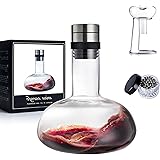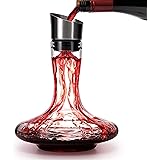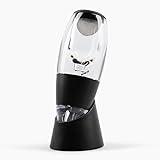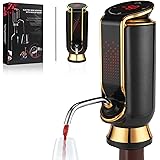How to Pick Wine: Unlocking Quality Through Label Specificity
Navigating the vast world of wine can often feel overwhelming, especially when faced with an aisle full of unfamiliar bottles. The concise tips shared in the video above offer an excellent starting point for those seeking to make informed selections. Understanding certain indicators on a wine label is considered a crucial step toward consistently choosing better quality wines.
Indeed, a common industry observation suggests that the level of detail provided about a wine’s origin often correlates directly with its perceived quality. This principle serves as a reliable guide for consumers who are aiming to improve their wine purchasing decisions. By learning to interpret these geographical cues, better choices are systematically made without requiring extensive prior knowledge.
Decoding the Wine Label: Your First Step to Quality Selection
The label on a wine bottle functions as its unique fingerprint, offering vital clues about its contents and heritage. For many consumers, the label is simply an aesthetic feature or a place to find the grape varietal. However, experienced wine enthusiasts recognize that it provides a wealth of information concerning the wine’s specific characteristics and potential quality level.
Careful examination of the label can reveal insights into the producer’s commitment to quality and regional expression. A detailed label suggests transparency and pride in the wine’s origins, which are generally associated with higher standards of production. This meticulous approach to labeling is often a reflection of the craftsmanship inside the bottle.
The Geographic Spectrum: From Broad to Bespoke
Wine labels frequently provide geographical information that ranges from very general to highly specific. This spectrum of detail can be systematically interpreted to estimate the wine’s likely quality and character. Data analysis consistently indicates that more specific geographical designations are often linked to more regulated production and higher quality benchmarks.
Understanding this hierarchy of place names is fundamental for anyone looking to refine their wine selection process. Each level of specificity provides unique insights into how the wine was produced. Consumers are encouraged to pay close attention to these geographical markers for improved results.
Broad Strokes: Wines from Wide Regions
Wines labeled with very broad geographical areas, such as “California” or “Product of USA,” represent the widest possible sourcing for their grapes. For instance, a bottle of Josh Cabernet, as highlighted in the video, merely states its origin as California. This designation means that the grapes used for the wine could originate from any part of the vast state.
While these wines can still be enjoyable and offer excellent value, the broad sourcing often implies less stringent regional regulations regarding grape varietals or winemaking practices. Such wines are typically produced in larger quantities, which allows for greater consistency across vintages but sometimes at the expense of unique regional character. Industry statistics show these broad-region wines form a significant segment of the accessible market.
Narrowing Down: Appellations and Specific Regions
A significant step up in specificity involves wines that list a particular region or appellation, such as “Napa Valley.” An appellation refers to a legally defined and protected geographical indication used to identify where the grapes for a wine were grown. In the United States, these are known as American Viticultural Areas, or AVAs.
For example, the Sequoia Grove Cabernet mentioned in the video proudly states its origin as Napa Valley. This signifies that all grapes used in that wine were sourced exclusively from within the boundaries of the Napa Valley AVA. Wines from designated appellations are generally subject to stricter regulations regarding grape types, yields, and winemaking techniques, which often contributes to enhanced quality and distinct regional characteristics.
Research consistently demonstrates that wines bearing specific AVA designations frequently command higher market prices due to the perceived assurance of quality and unique terroir expression. This increased regulation helps ensure a certain standard of wine is produced. Understanding the reputation of various AVAs can significantly enhance one’s ability to pick wine effectively.
Pinpointing the Source: Vineyards and Terroir
The pinnacle of geographical specificity on a wine label is achieved when a specific vineyard or sub-appellation is named. This level of detail indicates that the grapes were harvested from a particular plot of land, known for its unique soil composition, climate, and topography. The Elise Cabernet, originating from Yountville and a specific vineyard within Napa Valley, exemplifies this.
Wines designated by a specific vineyard are often considered expressions of “terroir,” a French term that encapsulates how a particular region’s climate, soils, and terrain affect the taste of wine. The concept of terroir is crucial for understanding why wines from even adjacent vineyards can possess dramatically different characteristics. Vineyard-specific wines often represent the highest quality offerings from a winery, produced in smaller quantities and reflecting meticulous attention to detail.
Studies examining consumer preferences indicate a strong correlation between vineyard-specific labeling and expectations of superior quality and complexity. These wines are frequently crafted with minimal intervention to allow the unique attributes of the vineyard to shine through. Such precise sourcing offers a profound level of insight into a wine’s potential character and excellence.
Why Specificity Matters: The Science and Art of Wine
The increasing specificity on a wine label is not merely a marketing tactic; it reflects a deeper commitment to quality and a greater influence of terroir. Regional regulations often become more stringent as geographical designations narrow. This means that a wine from a specific vineyard or sub-appellation is subject to a more defined set of rules governing its production.
These regulations frequently dictate permitted grape varietals, maximum yields per acre, and even specific winemaking processes. Such controls are established to protect the integrity and reputation of a given wine region. The result is often a wine with a more consistent character and higher quality than those from broader, less regulated areas.
The intricate interplay of microclimates, soil composition, and specific vineyard management practices profoundly impacts the grapes’ development and the resulting wine’s flavor profile. When a label specifies a vineyard, it signals that these unique environmental factors are intentionally being showcased. Therefore, picking wine with precise geographical details generally leads to a more predictable and often superior tasting experience.
Actionable Takeaways for Picking Wine
When selecting your next bottle, remember to scrutinize the label for geographical indicators. Prioritize wines that offer more specific information about their origin, moving beyond broad regional designations. This strategy is consistently shown to be an effective method for identifying wines of better quality and greater character.
Begin by exploring wines from established appellations, then gradually experiment with vineyard-designated bottles as your palate develops. This systematic approach allows for a deeper appreciation of the nuances that specific regions and vineyards impart to their wines. By understanding how to pick wine based on label specificity, consumers are empowered to make more confident and satisfying choices.







